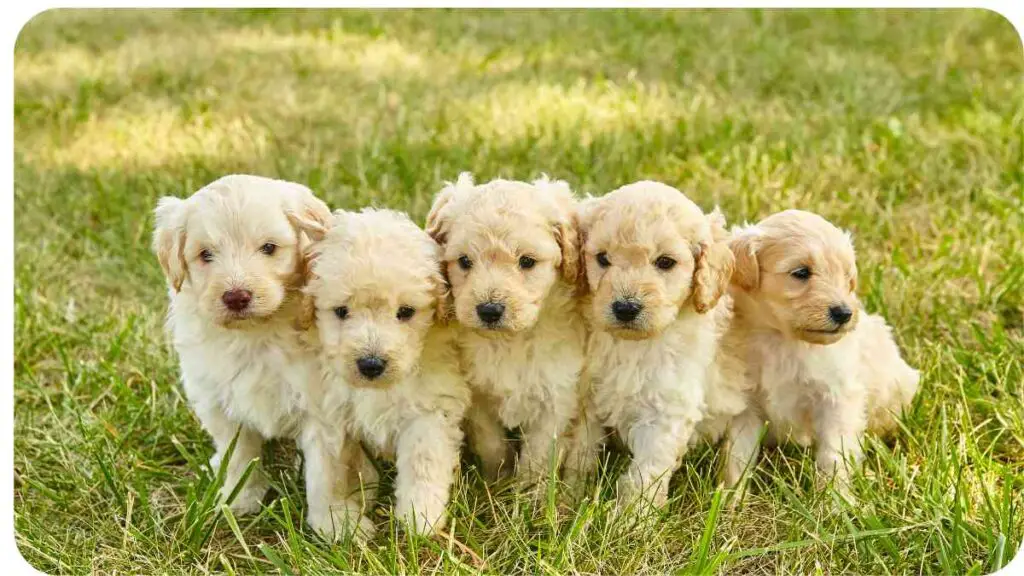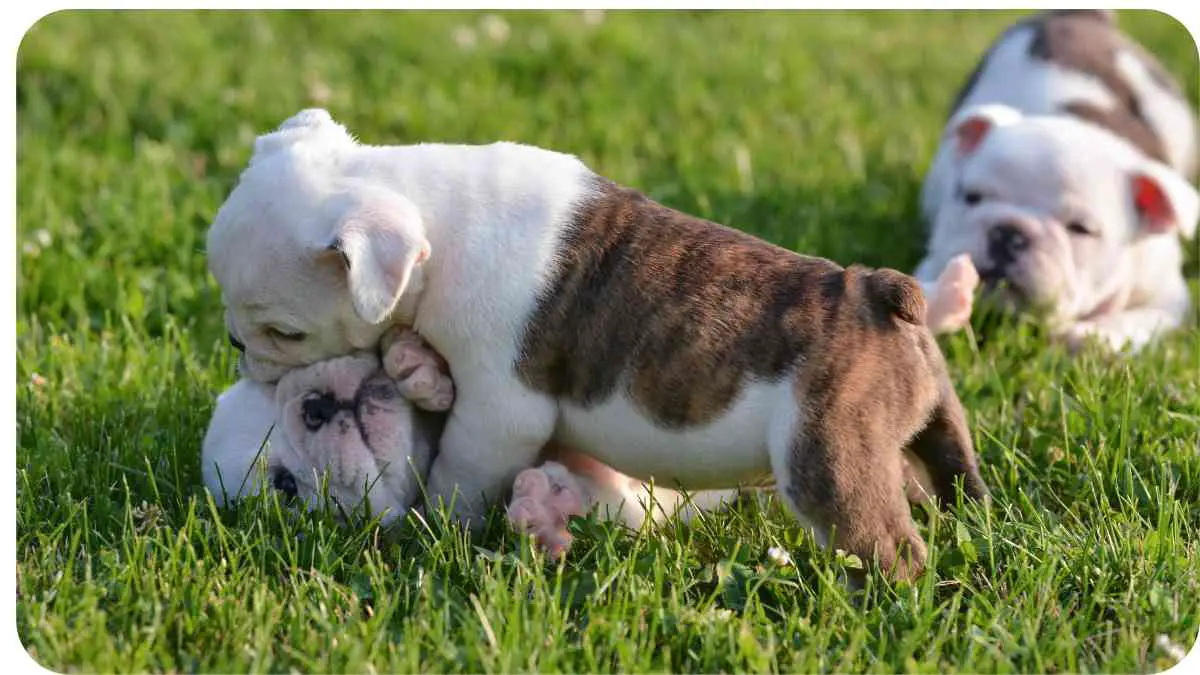Wondering about Labrastaff puppies? Unravel the mystery with our comprehensive guide. Whether you’re a new Labrastaff owner or considering breeding, we’ve got you covered. From understanding litter sizes to practical care tips, this article provides valuable insights to ensure the well-being of your Labrastaff pups.
| Takeaways |
|---|
| Labrastaffs can have varying litter sizes. |
| The average litter size for Labrastaffs is around 5-8 puppies. |
| Factors such as genetics, health, and nutrition can influence litter size. |
| It is essential to provide proper prenatal care and support for Labrastaff mothers. |
| Consultation with a veterinarian is recommended for specific breeding and care advice. |
Labrastaff Litter Size

Wondering about the potential size of a Labrastaff litter? The number of puppies a Labrastaff can have is influenced by factors like care, training, and environmental conditions. On average, Labrastaff litter sizes range between 6-10 puppies.
Additionally, the presence of other pets in your home plays a role, emphasizing the importance of ensuring their health and vaccinations before introducing a new Labrastaff puppy into the family, whether from a local pet store or breeder.
If you’re curious about the litter sizes of Labrador Retrievers, our comprehensive guide on how many puppies can Labrador Retrievers have provides valuable insights from experienced breeders.
Enhancing Labrastaff Litter Size
Interested in boosting your Labrastaff’s litter size? Follow these steps for optimal breeding outcomes:
- Ensure Fitness and Health: Prioritize your Labrastaff’s well-being before breeding. A fit and healthy parent contributes to successful reproduction.
- Provide Ample Exercise: Regular exercise is vital. Ensure your Labrastaff engages in sufficient physical activity to maintain overall health and increase breeding readiness.
- High-Quality Diet: Opt for a nutritious, high-quality diet. Adequate nutrition supports your Labrastaff’s reproductive health and can positively impact litter size.
Preparing for Labrastaff Puppy Birth

Anticipating the arrival of your Labrastaff puppies? Ensure a smooth transition with these essential preparations:
- Create a Safe Haven: Set up a secure space for the puppies to sleep, eat, and play. Optimal choices include a designated puppy bed or crate, providing comfort and safety.
- Indoor Potty Area: Since young puppies may not be ready for outdoor leash walks, designate an indoor potty area. This ensures convenience and hygiene during the early stages of their life.
- Veterinary Preparedness: Have a vet lined up in advance. This proactive approach enables immediate treatment if any issues arise. Avoid delays by ensuring your chosen veterinarian is accessible, preventing the need for last-minute searches during critical moments.
Caring for Labrastaff Puppies
Ensuring the well-being of your Labrastaff puppies involves a holistic care approach. Follow these guidelines for their optimal health and happiness:
- Warmth Matters: Labrastaffs, especially sensitive to cold weather, require a cozy sleeping environment during harsh winters. Provide warmth through a snug sleeping area and ample blankets to keep them comfortable.
- Maintain Cleanliness: While outdoor play is enjoyable, it’s crucial to keep your Labrastaff puppy clean to prevent coat issues and skin problems. Regular grooming and cleaning routines contribute to their overall well-being.
- Balanced Nutrition: Young Labrastaffs have higher food requirements—about twice as much per pound compared to adults. Ensure a balanced diet by incorporating a mix of dry kibble and wet food, varying their meals every few days. Be mindful of treat portions to prevent potential obesity issues in the future.
Labrastaff dogs are a unique crossbreed, and if you want to know how many puppies they can have, our vet-approved article on Labrastaff litter sizes will give you the answers you’re looking for.
Naming Your Labrastaff’s Newborn Puppies
Choosing names for your Labrastaff’s puppies can be a delightful experience. Consider these creative ideas to find the perfect monikers:
- Celestial Charm: Name your pup after a beloved movie star, capturing the essence of glamour and charm. Select a name from your favorite actors or actresses, or one you’ve always admired.
- Historical Homage: Give your puppy a sense of timeless significance by naming them after a historical figure. Ideal for those seeking a mini-me with a touch of historical flair.
- Colorful Connections: Draw inspiration from the circumstances of their birth. If born on Valentine’s Day, opt for red or pink-themed names like Candy, creating a meaningful connection to their arrival date.
- Personalized Touch: Connect each pup’s name to a unique feature, such as the color of their eyes. For instance, a brown-eyed puppy could be aptly named Bear.
| Puppy Number | Name Suggestions |
|---|---|
| 1st | Bella, Max, Luna |
| 2nd | Charlie, Daisy, Cooper |
| 3rd | Bailey, Rocky, Sadie |
| 4th | Milo, Rosie, Duke |
| 5th | Lucy, Oliver, Ruby |
Winter Care Tips for Labrastaff Puppies

Protecting your Labrastaff puppies from winter chill is paramount for their well-being. Follow these guidelines to keep them warm and healthy during the colder months:
- Draft-Free Shelter: Shield your puppies from drafts and keep them away from direct heat sources like radiators or fireplaces. This prevents accidental burns and ensures a safe and cozy environment.
- Ample Bedding: Provide abundant bedding material, such as straw or blankets, in their sleeping area. This soft foundation offers insulation, keeping them warm during the chilly nights, especially considering Labrastaffs’ tendency to shed less.
- Avoid Prolonged Exposure: Limit outdoor exposure during extreme cold. Puppies are particularly susceptible to cold temperatures, and prolonged exposure can lead to hypothermia—a potentially fatal condition if not promptly addressed.
Are you considering getting a Labradoodle and wondering about their litter sizes? Our informative post on how many puppies can Labradoodles have offers expert insights and guidelines for potential owners.
Effective Potty Training for Labrador Puppies
Mastering potty training is crucial for a happy coexistence with your Labrador puppy. Follow these effective methods to ensure successful potty training:
- Frequent Outdoor Breaks: Take your Labrador puppy outside every hour to reinforce the association between outdoor spaces and bathroom activities. Consistency is key in the early stages of training.
- Establish a Schedule: If hourly breaks are challenging, create a regular schedule for bathroom breaks. This routine helps your puppy anticipate and adapt to designated potty times, reducing the likelihood of accidents indoors.
- Prompt Response: Minimize the time between recognizing your puppy’s need to go and taking them outside. Prompt responses reinforce positive behavior and help establish the outdoor area as the designated potty zone.
Labrastaff Shedding
Labrastaffs do shed, but their shedding is moderate compared to other breeds, making them suitable for individuals with allergies. While they are often considered a non-shedding breed, regular grooming is essential to maintain their coat’s beauty and health.
The Labrastaff’s double coat plays a crucial role in temperature regulation during winter. The coat comprises long, coarse guard hairs atop a short, dense undercoat, providing insulation against extreme temperatures.
To minimize shedding and ensure a healthy coat, consistent grooming practices are recommended. Despite their lower shedding tendency, Labrastaffs still require attention to keep their coats in optimal condition.
| Breed | Shedding Level |
|---|---|
| Labrastaff | Moderate |
| Labradors | Moderate to Heavy |
| Staffordshire Bull Terriers | Low |
| Labrador Retrievers | Moderate to Heavy |
| American Staffordshire Terriers | Low |
Labrastaff Puppy Costs
The price of a Labrastaff puppy varies among breeders, with factors such as reputation and services impacting the cost. Consider the following information when evaluating Labrastaff puppy expenses:
- Breeder Discrepancies: Prices differ among breeders, influenced by their reputation, experience, and additional services provided.
- Average Cost: On average, expect to pay around $1,000 for a Labrastaff puppy. This fee typically encompasses vaccinations, spaying or neutering, and a health certificate confirming the puppy’s recent veterinary examination and overall health.
Housetraining Your Labrastaff Puppy
Successfully housetraining your Labrastaff puppy requires a thoughtful approach. Consider the following methods for effective results:
- Crate Training: Opt for crate training, a secure and widely recommended method. It provides privacy and prevents accidents on the floor, promoting a safe and controlled environment.
- Paper Training: For those seeking an alternative, paper training is an option. This method may be better suited to specific lifestyles, allowing for flexibility in the training process.
- Outdoor Potty Training: For a hands-on approach, encourage outdoor potty training. Guide your Labrastaff puppy to do their business outside, fostering familiarity with the outdoors while maintaining a secure environment indoors.
Labmaraners are a unique mix of Labrador Retrievers and Weimaraners. If you’re interested in this breed and want to know about their litter sizes, our article on how many puppies can Labmaraners have will provide you with the necessary information.
Cleaning Your Puppy’s Litter Box
Maintaining a clean and hygienic environment for your puppy involves proper cleaning of the litter box. Follow these steps for a safe and effective cleaning process:
- Gentle Cleaning Solution: Use a mild detergent and warm water to clean the litter box. Avoid scented soaps or detergents, as your puppy may be attracted to them and ingest harmful chemicals.
- Avoid Ammonia-Based Cleaners: Steer clear of cleaners containing ammonia, as they can irritate your puppy’s eyes.
- Protective Measures: Wear rubber gloves during the cleaning process to avoid direct contact with bacteria on your hands.
- Thorough Drying: After cleaning with soap and water, allow the litter box to air dry completely. Ensuring it is dry before refilling with fresh litter prevents bacterial growth.
When to Change Your Puppy’s Litter
Knowing when to change your puppy’s litter is essential for maintaining a clean and comfortable environment. Consider the following indicators to determine the right time for a litter change:
- Soiling Frequency: Change the litter when it becomes visibly soiled. Regularly monitor the litter box for signs of waste accumulation.
- Odor Detection: If the litter starts to emit unpleasant odors, it’s time for a change. Fresh litter helps control odors and ensures a more pleasant environment for your puppy.
- Training Milestones: Consider changing the litter when you’re ready to commence or advance your puppy’s training. This helps establish consistency in their training routine.
- Litter Clumping Ability: Non-clumping litter may require more frequent changes than clumping varieties. Follow the manufacturer’s recommendations for your specific litter type.
- Health Concerns: If your puppy develops any health issues related to the litter, such as allergies or sensitivities, consult with a veterinarian for guidance on suitable alternatives.
| Situation | Recommendation |
|---|---|
| Age of Puppy | Start considering a litter change around 3-4 weeks of age. |
| Soiling Frequency | If the litter becomes soiled or odorous quickly, it’s time to change it. |
| Litter Clumping Ability | Non-clumping litter may need to be changed more frequently than clumping litter. |
| Litter Type | Follow the manufacturer’s recommendations for the specific litter type. |
| Health Concerns | If your puppy develops any health issues related to the litter, consult a veterinarian. |
Understanding Your Labrastaff Puppy’s Emotions
Deciphering your Labrastaff puppy’s emotions is crucial for providing attentive care. Focus on their tail and behavior for insights into their well-being:
- Happy Signals:
- Tail Wagging: A wagging tail is a clear sign of excitement and happiness. It indicates your puppy’s desire for attention and interaction.
- Engagement: If your Labrastaff engages with you, showing interest in play or interaction, it’s a positive indicator of their mood.
- Expressing Affection:
- Petting Response: Respond to tail wagging by petting your puppy on the head or behind the ears. This reinforces positive emotions and creates a bonding experience.
- Alert for Changes:
- Unusual Behavior: If your Labrastaff puppy shows disinterest in play or interaction, it could be a signal that something is amiss. Monitor for signs of illness or injury, especially if they were recently engaged in vigorous play.
Curious about the litter sizes of Labrabulls? Our vet-approved post on how many puppies can Labrabulls have will give you the details and considerations to keep in mind if you’re thinking of getting this mixed breed.
Monitoring Your Labrastaff Puppy’s Health
Ensuring the well-being of your Labrastaff puppy requires vigilant observation and prompt action if any concerns arise. Be attentive to the following signs of potential health issues:
- Lethargy or Depression:
- Observation: If your Labrastaff appears lethargic or depressed, seek immediate veterinary attention. These behaviors could signal underlying illness, injury, or pain.
- Changes in Eating Habits:
- Reduced Appetite: A noticeable decrease in eating, or refusal to eat, may indicate digestive issues or underlying health problems. Consult your veterinarian for guidance and treatment.
- Digestive Disturbances:
- Frequent Diarrhea or Vomiting: Persistent or recurrent diarrhea or vomiting, even if infrequent, warrants a vet visit. These symptoms may be indicative of serious issues such as parasites or viruses.
- Excessive Self-Biting:
- Self-Mutilation: Excessive biting during play, known as self-mutilation, requires consultation with a vet. This behavior may have underlying causes such as anxiety disorders or boredom.
Conclusion
In conclusion, embarking on the journey of Labrastaff parenthood involves a myriad of considerations, from understanding litter dynamics to ensuring the holistic well-being of your furry companions. This comprehensive guide has illuminated key aspects, empowering you to provide the best care for your Labrastaff puppies.
By grasping the nuances of litter size, enhancing reproductive health, and preparing for the birth, you set the stage for a nurturing environment. Essential care practices, including warmth provision, cleanliness, and a well-balanced diet, contribute to the physical and emotional health of your Labrastaff pups.
Creative naming and considerations for winter care underscore the personalized approach to puppy parenthood. Potty training, shedding insights, and financial considerations further enrich your understanding, ensuring a seamless integration of Labrastaffs into your family.
As you navigate housetraining methods, maintain the litter box, and monitor health indicators, the bond with your Labrastaff puppies deepens. Reading their emotions becomes second nature, allowing you to respond with care and sensitivity.
In the realm of Labrastaff puppy parenthood, this guide serves as a compass, providing insights, tips, and heartfelt encouragement. We anticipate the joyous moments ahead as you create lasting memories with your Labrastaff companions. Share your experiences, and let the journey of love and companionship flourish with your adorable Labrastaff pups!
Further Reading
WagWalking: Learn more about Labrastaff breed characteristics, temperament, and care requirements on WagWalking.
DogTime: Explore detailed information about Labrastaff breed history, personality traits, and training tips on DogTime.
Dogell: Discover in-depth insights into Labrastaff breed characteristics, health issues, and recommended exercise routines on Dogell.
And here’s the markdown format for the “FAQs” section:
FAQs
Can Labrastaffs be good family pets?
Yes, Labrastaffs can make excellent family pets. They are known for being affectionate and loyal companions.
Are Labrastaffs easy to train?
Labrastaffs are generally intelligent and eager to please, making them trainable. Consistent positive reinforcement methods and early socialization are key for successful training.
What is the typical size of a Labrastaff?
Labrastaffs are medium to large-sized dogs. On average, males can weigh between 50-80 pounds, and females can weigh between 40-70 pounds.
How much exercise do Labrastaffs need?
Labrastaffs have moderate to high exercise needs. They require daily physical activity, such as brisk walks, playtime, and mental stimulation to keep them happy and healthy.
Do Labrastaffs have any specific health concerns?
Labrastaffs may be prone to certain health issues inherited from their parent breeds, such as hip dysplasia, allergies, and skin irritations. Regular veterinary check-ups and a balanced diet can help maintain their overall well-being.

I’m Dr. Hellen James, a professional veterinarian with a deep interest in the ways that litter size affects the health of animals. I’ve spent years studying this subject and performing research on reproduction in many different kinds of creatures.


